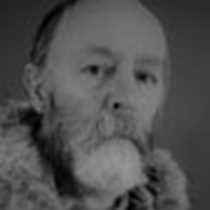Storfjord Region, Svalbard
Our second day in the Svalbard archipelago started just as breakfast was called when an announcement came from the Bridge that a polar bear had been spotted on a floe ahead of the ship. The Captain and bridge officers slowly and cautiously nudged the ship closer and closer to the uninterested bear. As we drew nearer we could see that he had just killed a seal and was enjoying his breakfast even though we had (temporarily) sacrificed ours in order to watch him.
Shortly after our breakfast another announcement informed us that a walrus had been spotted hauled out on the ice. Again we nudged close, kept silence on deck and enjoyed unobstructed views of the resting walrus that was clearly enjoying the warm sun and flat-calm waters. The silence of the Arctic was broken only by the sound of many camera shutters clicking and whirring as we captured this rare moment.
By late morning we were able to achieve our original objective – our first landing on Svalbard soil, or, rather, Svalbard tundra. Before the Zodiacs took us ashore the officers on the bridge scanned the shoreline for any signs of polar bears and a scout boat patrolled the beach landing area for the same reason. Once the Expedition Staff was satisfied the coast was clear, we shuttled ashore to the pebble-strewn beach and stood on Svalbard terra-firma.
A variety of walks were offered, reindeer were spotted by some, tundra was examined by others while a few opted to enjoy the tranquility and stillness by just sitting on the beach, close to the landing, and absorbing the fact that we really are in the Arctic, the Land of the Ice Bears.
The first event of the afternoon saw Jason Kelley giving his presentation on the geology of this remote and raw part of the northern hemisphere. Whereas most of the emphasis for an expedition like this is on the unique flora and fauna, the very ground that supports all those life-forms has a ‘life’ and history all its own. By giving us an understanding of what we are literally standing on, Jason certainly helped fill out the big picture of the Arctic.
Back on deck we watched in the brilliant afternoon sunshine the countless forms and fantastic shapes of the ice floes, small icebergs, pressure ridges and all the other obstacles to early travelers being brushed aside as the National Geographic Explorer nudged gently but firmly forward.
Finally, the evening was a magical one as the continuous sun gave a warmth and glow to the multitude of ice forms that we slid slowly past as we sailed into what otherwise would have been a glorious sunset had it not been for our high latitude.



